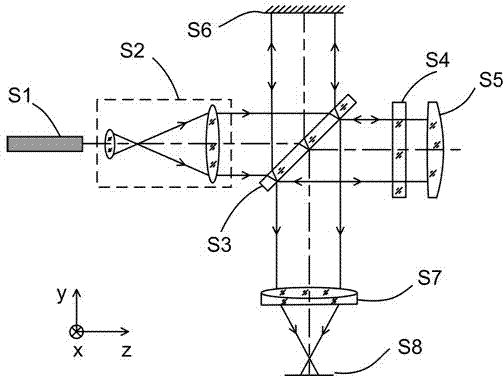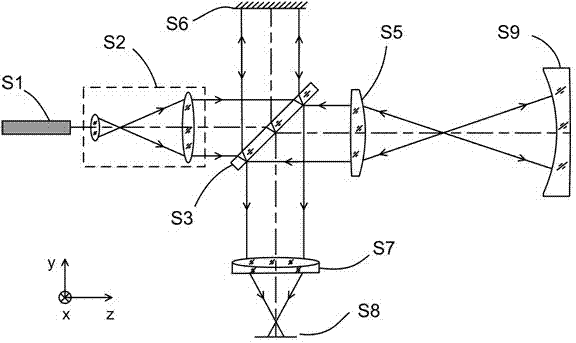Method for aligning partial compensating lens in aspheric nonzero-digit interference detection
A technology for compensating lenses and interference detection, applied in measuring devices, instruments, and optical devices, etc., can solve problems such as increasing costs, and achieve the effect of reducing adjustment errors
- Summary
- Abstract
- Description
- Claims
- Application Information
AI Technical Summary
Problems solved by technology
Method used
Image
Examples
Embodiment
[0038] Examples of application of the present invention to partially compensated lens tilt alignment and decenter alignment are described below.
[0039] figure 1 It is a diagram of the partial compensation lens S5 tilt alignment device in the aspheric non-zero position interference detection. figure 2 for figure 1 The specific implementation of the combination and separation of the middle alignment plate S4 and part of the compensation lens S5: the alignment plate S4 and part of the compensation lens S5 are respectively placed in the mirror holders 1 and 2, and are fixed by the pressure ring 4; it can be realized by using the adjustment machine The alignment plate S4 and part of the compensating lens S5 are parallel to the respective reference planes 5 and 6 ; At this time, it can be realized physically that the alignment plate S4 is parallel to the part of the compensation lens S5.
[0040] figure 2 The middle auxiliary alignment plate S4 is a single parallel plate wit...
PUM
 Login to View More
Login to View More Abstract
Description
Claims
Application Information
 Login to View More
Login to View More - R&D
- Intellectual Property
- Life Sciences
- Materials
- Tech Scout
- Unparalleled Data Quality
- Higher Quality Content
- 60% Fewer Hallucinations
Browse by: Latest US Patents, China's latest patents, Technical Efficacy Thesaurus, Application Domain, Technology Topic, Popular Technical Reports.
© 2025 PatSnap. All rights reserved.Legal|Privacy policy|Modern Slavery Act Transparency Statement|Sitemap|About US| Contact US: help@patsnap.com



